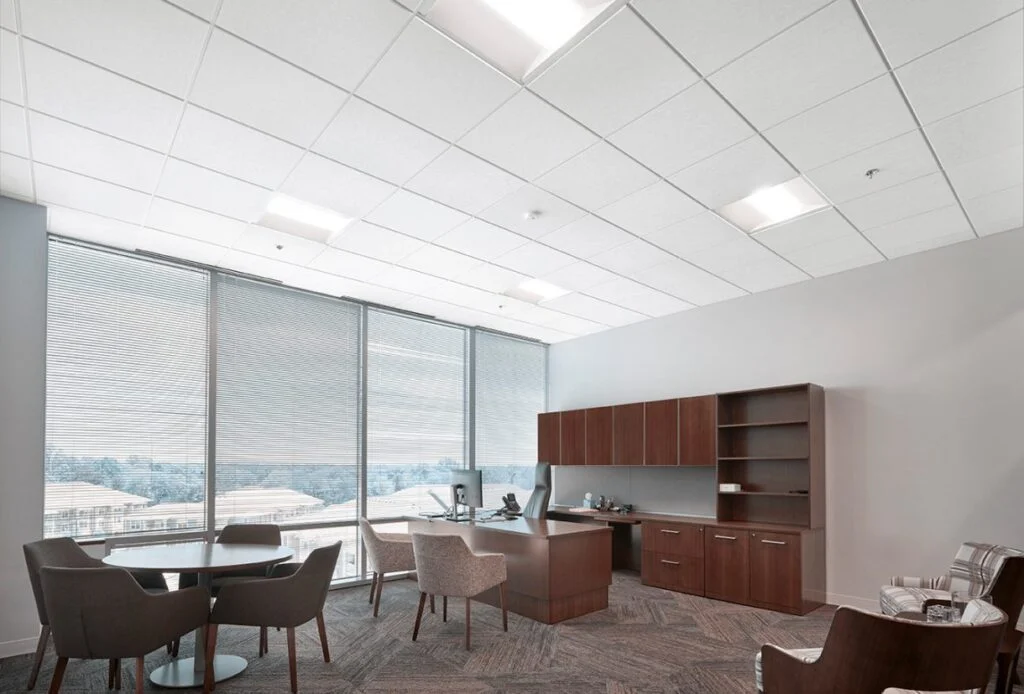Noise management is crucial in all those spaces especially in offices, schools, healthcare facilities, and commercial areas, because it is always concerned with the effort of comfort and productivity. Two of the most efficient tools for maximum sound control include acoustic ceiling tiles and sound attenuators. Although both reduce the level of noise and create quieter spaces, they solve issues related to handling sound absorption and attenuation differently.
We will discuss how Acoustic Ceiling Tiles and sound attenuators play a vital role in superior sound control. We will discuss how they work and what unique benefits they offer for other applications.
Acoustic Ceiling Tiles: Key Benefits
The advantages of acoustic ceiling tiles go beyond simple noise reduction. These have a couple of practical and aesthetical benefits that make them most popular in various industries:
- Improved Acoustics: They reduce reverberation and prevent the sound from traveling from one area to another in a building by absorbing sound. So, the main advantage of acoustic ceiling tiles is to improve the acoustics in a room.
- Aesthetic Appeal: Modern acoustic ceiling tiles are available in many designs, colors, and textures which allow architects and interior designers to put them into use with any aesthetic. They can fit well with the general décor of a space yet deliver excellent sound control.
- Easy Installation: It can be fairly easy to put in acoustic ceiling tiles by retrofitting them into existing spaces without causing much interruption. This makes it an economical solution to improve acoustics in both new and old buildings.

How Sound Attenuators Work?
While Acoustic Ceiling Tiles absorb sound, sound attenuators are supposed to control the travel of the sound. Sound attenuators are referred to as silencers; they are installed in ductwork or mechanical systems to reduce the noise caused by airflow, machinery, or other HVAC systems.
- Noise Reduction in HVAC Systems The HVACs can cause quite an amount of noise, especially in large buildings. The application of sound attenuators minimizes the noises caused by the reduction of air turbulence and vibrations within the ductwork. Such noises generated by heating, ventilation, and air conditioning do not disturb the occupants.
- Dissipating sound energy: In its practical application, the attenuating work of sound energy is how the sound attenuator works, typically designed with internal baffles from sound-absorbing materials such as fiberglass, trapping and absorbing the sound wave, thus they do not escape to occupied spaces.
- Frequency Control: Sound attenuators are also very effective in controlling low-frequency noise, which could be the hardest to control with other soundproofing materials. This makes sound attenuators ideal for industrial applications and large commercial facilities where equipment noise is of considerable concern, as well as mechanical rooms.
Conclusion
Both acoustic ceiling tiles and sound attenuators offer complementary solutions that focus on both comfort and productivity in any space for which noise control is a priority. In contrast to ceiling tiles, sound attenuators are designed to address noise at the source: mechanical systems and equipment cannot create noise pollution.
Whether it is an office building, a school, or any health facility, these acoustic solutions will boost the quality of your environment dramatically. Work together, and acoustic ceiling tiles and sound attenuators ensure a balanced approach to sound management, which makes spaces quieter, more efficient, and aesthetically pleasing
For more insightful articles related to this topic, feel free to visit insighthubster.online
